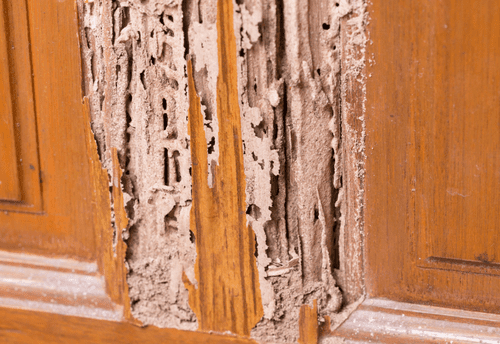Termites are small, social insects that live in large colonies and are found throughout the world as well as the United States. While they are often associated with warm, humid climates, termites can be found in every state except for Alaska. There are over 2,600 species of termites worldwide, with around 50 species found in the United States.
Termites are known for their ability to consume and digest cellulose, which is the main component of plant cell walls. They are often referred to as “silent destroyers” because they can cause significant damage to wooden structures, including homes, without being detected until it is too late. In the United States, termites cause billions of dollars in damage each year.

Termites are divided into three main categories: subterranean, drywood, and dampwood. Subterranean termites are the most common and widespread type in the United States. They live in underground colonies and build tunnels to access food sources, which can include the wood in buildings. Drywood termites are found in the southern and western United States and do not require contact with soil moisture. They live in small, isolated colonies within the wood they consume. Dampwood termites are found in the western United States and prefer wood with high moisture content.
There are three main types of subterranean termites found in the United States: the Eastern subterranean termite, the Western subterranean termite, and the Formosan subterranean termite. The Eastern subterranean termite is found in the eastern United States and is the most common type of termite in the country. It is responsible for the majority of termite damage to homes. The Western subterranean termite is found in the western United States and is similar to the Eastern subterranean termite in size and behavior. The Formosan subterranean termite is found in the southern United States, especially in Louisiana and along the Gulf Coast. It is larger and more aggressive than other subterranean termites and can cause more damage in a shorter amount of time.

Termites are social insects that live in large colonies. Each colony is made up of several different castes, including workers, soldiers, and reproductives. The workers are responsible for foraging for food, building and maintaining the nest, and taking care of the young. The soldiers defend the colony from predators and intruders. The reproductives are responsible for reproducing and establishing new colonies.
Termites are attracted to wood and other cellulose-based materials because they contain the nutrients necessary for their survival. They can enter a structure through small cracks or openings in the foundation and begin feeding on the wood. Once they have established a colony, they can cause significant damage to the structure of a building.
There are several signs that termites may be present in a home or building. These include:
- Swarms of winged termites, also known as “swarmers,” around windows or doors. Swarmers are reproductives that leave the nest to establish new colonies.
- Discarded wings near windows or doors.
- Mud tubes on the exterior of the building. Termites build these tubes as a way to travel from their nest to a food source without being exposed to the open air.
- Hollow-sounding wood. Termites eat the wood from the inside out, leaving the outer layers intact, so the wood may appear to be solid even if it has been severely damaged.
If you suspect that you have a termite infestation, it is important to have the problem addressed as soon as possible. The longer the infestation is allowed to continue, the more damage the termites will cause. AIMVO Pest Control can assess the extent of the infestation and get your home to be termite free. Please click below to contact our team of experts.
